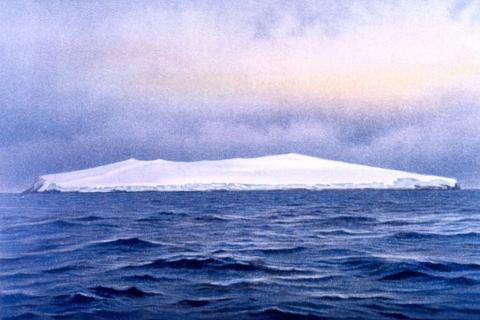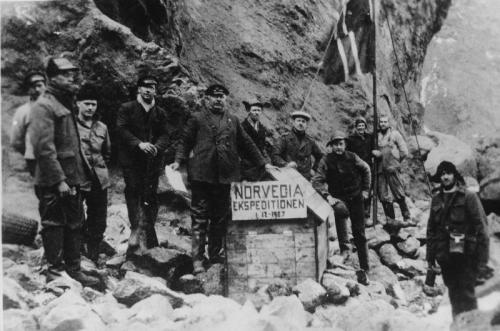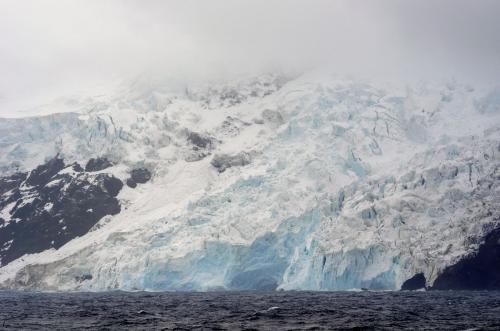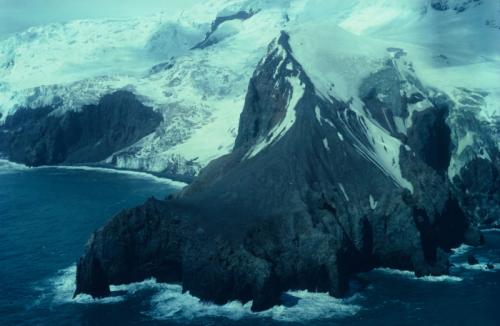Bouvet Island: Seasons and Climate

(Photo: Carl Chun, water colour by F. Winter, 1903. Photo taken on the German Valdivia expedition)
Bouvet Island is the mere piece of rock in southern part of Atlantic Ocean. It is completely uninhabited and 93% of its 49 km2 (19 sq mi) is covered with massive glacier. The island lies within zone of maritime Antarctic climate. It is cloudy and foggy.
Bouvet Island is Norway’s’ dependent territory so many travelers that are ought to visit all countries of the world are considering necessary to visit it. But most of them are forced to confine their visit to sailing around the island for its shores aren’t suitable for landing. Many travelers haven’t even chance to see the island due to thick fogs and clouds.

(The annexation of the island on 1 December 1927)
Temperature range on the island is rather narrow. Averages are hovering between 4 and -5 °C (39-23 °F). However most of time it is slightly below zero (32 °F). Each month have roughly 25 days of overcast and 20 days with precipitation and its annual amount is above 750 mm (29.5”). In addition there are strong western winds with 10 m/s (20 mph).
Seasons
Contents:
Summer in Bouvet Island

(Glacier on Bouvet Island's west coast. François Guerraz - Own work)
The island is located on the border between zones of Antarctica and moderate climate. Summer (December - May) weather conditions are defined by air masses from moderate zone. Days are as cloudy and windy as usual yet temperatures are somewhat higher as well as amount of precipitation. February is the warmest month with -2 °C of mean daily maximum. Peak of rains is at April when average monthly amount of it reaches 85 mm (3.3”).
Climate of the Summer Months
| September Max average t°: -1 °C (30 °F) Min average t°: -5 °C (23 °F) |
| October Max average t°: 0 °C (32 °F) Min average t°: -3 °C (27 °F) |
| November Max average t°: 1 (34 °F) Min average t°: -2 °C (28 °F) |
High humidity and strong winds are making climate of the island harsh even at summer with its relative warmness. Occasional rises of temperature in positive range are making no difference. However even few science expeditions which are visiting the island are preferring summertime.
| December Max average t°: 3 °C (37 °F) Min average t°: -1 °C (30 °F) |
| January Max average t°: 3 °C (37 °F) Min average t°: 0 °C (32 °F) |
| February Max average t°: 4 °C (39 °F) Min average t°: 0 °C (32 °F) |
Winter in Bouvet Island

(Cape Valdivia, Bouvet Island, 2009)
At winter (June-November) weather is under influence of inland Antarctic air masses. Average temperatures are dropping to -5…-9 °C (23-16 °F). At winter there is no warmed layer of surface oceanic waters thus air is colder too.
Climate of the Winter Months
| March Max average t°: 3 °C (37 °F) Min average t°: 0 °C (32 °F) |
| April Max average t°: 2 °C (36 °F) Min average t°: 0 °C (32 °F) |
| May Max average t°: 1 °C (34 °F) Min average t°: -2 °C (28 °F) |
In addition to precipitations, winds and overcast there are plenty of icebergs in neighboring water. At summer border of their drift is near to Antarctic coasts yet at winter icebergs are floating much further. Thus navigation at this period is considered dangerous. Antarctic is closed and it isn’t easy to get to the Bouvet Island too.
| June Max average t°: 0 °C (32 °F) Min average t°: -4 °C (25 °F) |
| July Max average t°: -1 °C (30 °F) Min average t°: -5 °C (23 °F) |
| August Max average t°: -1 °C (30 °F) Min average t°: -5 (23 °F) |
 Seasons of the Year
Seasons of the Year 
